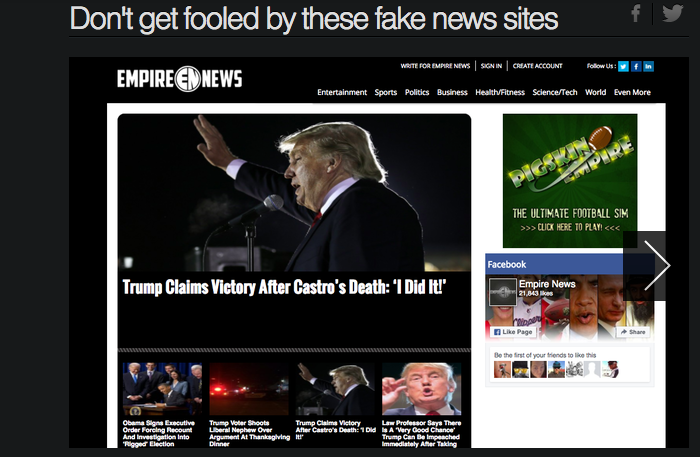Fake news has found its place in the headlines for creating shockwaves. How you can sort fact from fake and protect yourself from bogus information sources to stay sane and safe online.
Front page news:
From the Pope supporting one Presidential candidate to Michelle Obama deleting tweets that endorsed another one, fake news stories are finding their way into public discourse. They have exerted profound influence on our nation’s narrative over the last year. Even media stars, like Sean Hannity, can have difficulty discerning legitimate sources of news. Fake news is created by the kinds of people who, when asked, might call their work satire, or admit that they’re in it for the money or for the thrill of deception, says the New York Times.

We didn’t have to go searching for fake news pieces, either. Faux stories have pushed their way into our lives through promotion on major social media sites, like Facebook. Lies flung around on social media only become more popular, as visibility pushes them to the top of search results on Yahoo and Google. Tech leaders like Apple’s CEO Tim Cook have acknowledged the need for tech tools to “diminish the volume of fake news,” as he told the Daily Telegraph. Yet, no single company has taken ownership or leadership of the issue:
“We are making a very important point of not putting ourselves in a position of deciding what’s fake and not fake. I don’t think people want us to be the arbiters of truth,”
Dan Rose, Facebook Vice President of Partnerships, said this week at Recode’s Code Media conference in Southern California
This stance from a company that has almost 2 billion users worldwide. A philosophical stance on fake news contradicts that one of the investor, for Facebook.
While the industry wrestles with limits, hundreds of millions of readers are susceptible because of routine social media habits. 62 percent of U.S. adults get their news from social media sites, according to the Pew Research Center. This means the majority of us are exposed to false information on a regular basis. With fake news sites only getting more widespread and deceptive, here is some expert advice on how to protect yourself.
How to protect yourself from faux headlines:
-
Notice URLs before clicking – avoid .COM.CO sites and those ending with “LO”
-
“Watch out for common news websites that end in “.COM.CO” (abcnews.com.co, for example), as they are often fake versions of real news sources. Also avoid websites that repackage “facts” and commonly end in “LO” like Newslo,” says Melissa Zimdars, a communication and media professor from Merrimack College in Massachusetts
-
-
Avoid outrageous and emotional headlines
-
Sites deviating from AP Style show a lack of editorial resources. ALL CAPS or emotional writing with terms like: “HATE!” or “LIES!” can indicate that the source isn’t a traditional journalistic source. Risque photos are also a giveaway, as well
-
-
Stick with reputable people and sources
-
Stick with news from organizations and people you trust, as they have the time, resources and ethical standards to conduct research, link to sources and cite statements from parties involved
-
-
Know that if there’s only one outlet reporting a breaking story, it is probably fake
-
Almost every news outlet will (eventually) report on a breaking story. If there is only one source for story, like the one where the Pope was endorsing Donald Trump, it is probably fake
-
-
Use fact checking sites
-
If ever in doubt, visit a legitimate fact checking websites: factcheck.org – a project of the Annenberg Public Policy Center can be a good source for info. Snopes is another source
-
-
Block fake sites from your browser
-
Cross reference legitimacy or block fake sites using a growing directory being aggregated by Snopes or the list compiled by fake news expert, Melissa Zimdars. Parental controls or 3rd party software can help block these sites on Safari, Chrome or Firefox

-
Next in the fight against fake news:
“I think only education can solve this problem,” said Pat Winters Lauro, a professor at Kean University in New Jersey. He began teaching a course on news literacy this semester, according to the New York Post. Google is also currently training students at leading journalism schools in France in advanced search techniques that can be used to identify fake news, ahead of that country’s election this spring.
For the rest of us, Zimdars says, “The best thing to do in our contemporary media environment is to read/watch/listen widely and often, and to be critical of the sources we share and engage with on social media. “
